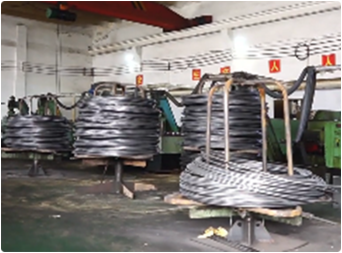Nov . 27, 2024 10:57 Back to list
Choosing the Right Die Size for 1/4 Rods in Various Applications
Choosing the Right Size Die for 1/4 Rod A Comprehensive Guide
When it comes to metalworking and various fabrication processes, selecting the appropriate die size is crucial, especially when working with 1/4-inch rod. This decision impacts not only the efficiency of your operations but also the quality of the final product. Whether you're engaged in cutting, threading, or forming processes, understanding the nuances of die selection can significantly elevate your projects.
Understanding Die Sizes
A die is a specialized tool used in manufacturing to cut or shape material. For rods, such as a 1/4-inch diameter rod, the die size must correspond closely to the intended application. There are various types of dies, including cutting dies, forming dies, and threading dies, each serving distinct purposes. For threading, specifically, you would typically look for a tap or die that is designed for a 1/4-inch nominal size.
Types of Dies
1. Cutting Dies Typically used for severing material. If you’re cutting a 1/4 rod, ensure the die is sharp and compatible with the rod's material to ensure clean cuts without burrs.
2. Threading Dies Critical for creating external threads on rods. A 1/4-inch rod usually requires a die that matches the thread specifications—common sizes include 1/4-20 (coarse) or 1/4-28 (fine), among others. It’s essential to know the thread type you require before selecting a die.
3. Forming Dies Used to bend or shape metal rods. For 1/4 rods, ensure the die radius and shape match the desired bend requirements. Overbending or using an improperly sized die can lead to material fatigue and failure.
Key Considerations in Choosing Die Size
what size die for 1 4 rod

1. Material Type Different materials require different types of dies. For example, a die intended for steel may not work as effectively with aluminum or brass. Also, consider the hardness of the material; softer materials may require a different approach than harder alloys.
2. Application Purpose Determine what you intend to achieve with the die. Are you cutting, threading, or forming? Each purpose has a corresponding die type and size, crucial for meeting the precision you need.
3. Die Quality The quality of the die will significantly influence the performance of your operations. High-carbon steel or carbide dies often provide better durability and performance compared to standard steel options. Investing in a quality die pays off in the long run.
4. Tolerances and Specifications Always check the technical specifications for the die, including tolerances. A die that fits too loosely or tightly can affect the integrity of the process and lead to wastage of materials.
Tips for Successful Use of Dies
- Regular Maintenance Keep your dies clean and well-maintained. Regular cleaning prevents buildup that can affect cutting or shaping processes. - Test with Scrap Material Prior to using a new die, always test it with scrap material to ensure it works as intended. - Follow Manufacturer Guidelines Consult the manufacturer’s guidelines for recommendations on die sizes and applications to optimize your usage.
Conclusion
Choosing the right size die for a 1/4 rod is not merely a matter of picking from a catalog; it involves a careful consideration of the type of work you're performing, the materials involved, and the specific requirements of the task at hand. By understanding the distinctions among various types of dies and applying the right considerations, you can enhance both the efficiency of your processes and the quality of the products you create. Whether you are a hobbyist or a professional machinist, mastering this selection process will undoubtedly lead to improved results in your metalworking endeavors.


